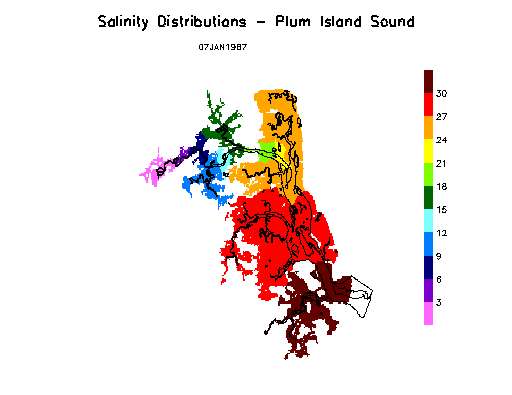
PIE-LTER
Site Resources:
Project Overview
The Plum Island Ecosystems (PIE) LTER research site consists of a coupled watershed and estuary in northeastern Massachusetts. The Ipswich River (400km2) and Parker River (200 km2) basins make up the watershed of the estuary. The watersheds lie within the Boston Metropolitan region. Population density is about 250 people km-2.The 25 km long (16 miles) macrotidal Plum Island Sound estuary contains salt marsh, dominated by smooth cordgrass (Spartina alterniflora) and marsh hay (Spartina patens), fresh marsh, dominated by cattail (Typha), intertidal flats and open water tidal creeks and bays. This is the largest wetland dominated estuary in New England and it supports extremely productive commercial and recreational soft-shell clam and striped bass fisheries.We have been investigating the ecology of Plum Island Sound estuary since the late 1980s with support primarily from the National Science Foundation. (NSF) We were part of NSF Land Margin Ecosystems Research program in the early 90’s. The site became part of the NSF's Long Term Ecological Research (LTER) Network in 1998. The Plum Island project is one of only 4 LTER sites that studies the effects of human activities in watersheds on estuaries. The PIE LTER has developed an extensive database open to the public via the Internet that includes our results from long-term field observations and experiments in the Ipswich and Parker River watersheds and the Plum Island Sound estuary.The LTER maintains two research facilities adjacent to the estuary. Marshview Farm consists of a house and field lab for 12 people; the Rowley River field house provides housing for 8, minimal lab space, dock facilities and access to field sites. Primary institutions participating in the PIE LTER include the Marine Biological Laboratory, Clark University, Massachusetts Audubon Society, University of Georgia, University of Massachusetts, University of New Hampshire, and University of South Carolina.

Salinity distributions in Plum Island Sound modeled from freshwater discharge measurements. 1987 was an unusually dry summer, as can be seen from the high salinities in the upper Parker River Estuary.
This material is based upon work supported by the National Science Foundation under Cooperative Agreements #OCE-9726921, #OCE-0423565, #OCE-105874, #OCE-12382127. Any opinions, findings, conclusions, or recommendations expressed in the material are those of the author(s) and do not necessarily reflect the views of the National Science Foundation.